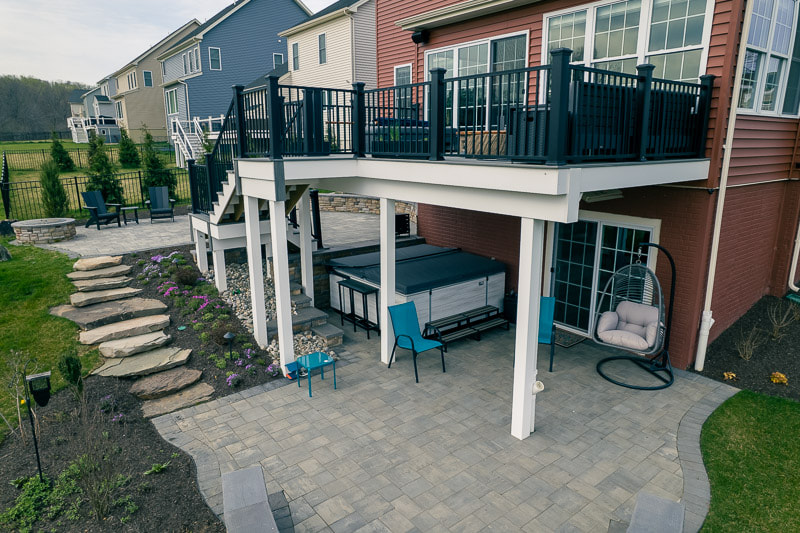Most people are familiar with the term “landscaping.” Whether you rent or own your home, you likely have to do a certain degree of landscaping work (or outsource it) to maintain a nice, clean property. However, while landscaping is a widely known and understood term, hardscaping is not. So, what is hardscaping? How does it differ from landscaping? What are some examples of residential hardscaping? What are the long-term benefits?
We’re here to answer all of these questions and more, so let’s get started! And if you’re looking for quality outdoor living services in Maryland, be sure to reach out to the experts at Custom Design & Build for help. In the meantime, continue reading to learn more about hardscaping and all of its benefits!
What Is Hardscaping?
Hardscaping refers to almost any element of an outdoor design that is not “living” (i.e. plants and vegetation). Some of the most common examples of hardscaping include walkways, walls, and other fixed or standing structures (like pergolas or patios). These are exclusively made with hard, non-living materials (hence the name), such as brick, stone, concrete, and wood.
Unless you want your outdoor living space to resemble a jungle, surrounded by plants of all shapes and sizes, and with virtually no sign of human intervention, there’s a good chance that your next exterior renovation project will include some hardscaping. It is often the backbone of any good outdoor space. From modern fire pits to garden edging stones, there are plenty of ways to incorporate hardscaping for the improvement of your residential property.
Hardscaping vs. Landscaping
While you might have already guessed it by the names alone, it’s important to understand the differences between hardscaping and landscaping. This is because the two are often managed by different people (or companies) with different equipment and skill sets. As previously mentioned, hardscaping includes the man-made, non-living elements of an outdoor space. Alternatively, landscaping refers to all of the living elements of an outdoor space, such as grass, flowers, hedges, trees, and other plants. When designing any kind of outdoor space, you’ll want to consider both hardscaping and landscaping and ensure that they’re working together in a way that looks great and makes sense for you and your family.
Benefits For Residential Properties
- Demarcation – Hardscaping is one of the easiest and most practical ways to provide separation between distinct spaces. For example, if you want to have an outdoor kitchen that’s not directly connected to your pool area, you may place a wall or fence between them.
- Privacy – Fences are a common solution if you want privacy and even an added layer of security for your backyard.
- More Living Space – Hardscaping can help you extend the living space of your home to the outdoors. Even if you already have a small patio, you can build onto it and add overhead coverage to make it a larger, more flexible living space — regardless of the weather conditions.
- Low Maintenance – Unlike grass and other landscaping elements that need to be watered and regularly trimmed, hardscaping is pretty low maintenance. Outside of damage that might occur after a major storm or many years of wear and tear, you can pretty much just set it and forget it.
Start Your Next Hardscaping Project
Do you want to add more structural or aesthetic elements to your yard? Are you looking for increased privacy and more room to enjoy outdoor activities? Are you considering hardscaping but not sure where to start? Custom Design & Build is here to help. We have years of experience designing and installing outdoor living spaces for homeowners in Maryland.
Are you ready to make hardscaping a permanent part of your outdoor living space? Then you should call the professionals at Custom Design & Build. Reach out to our team today to learn more!






